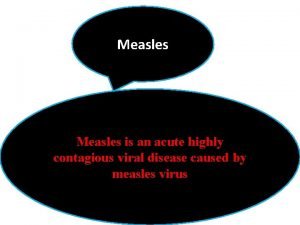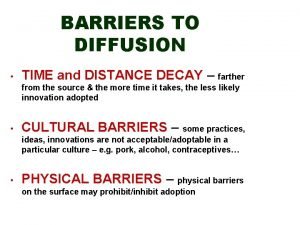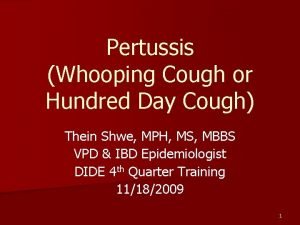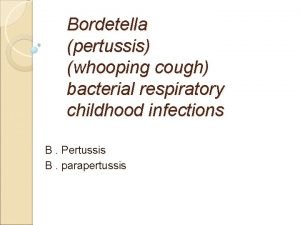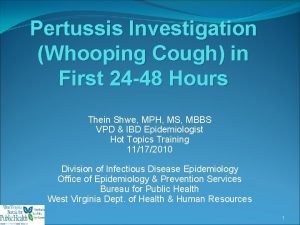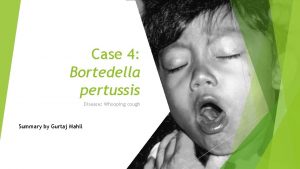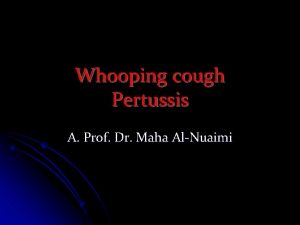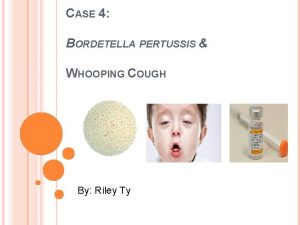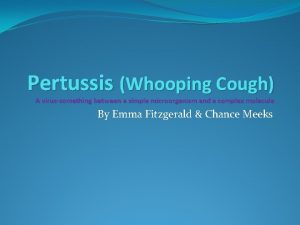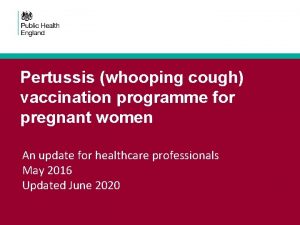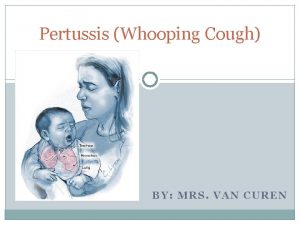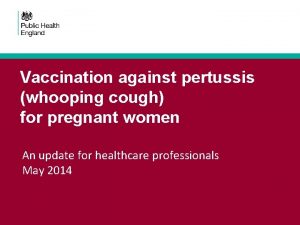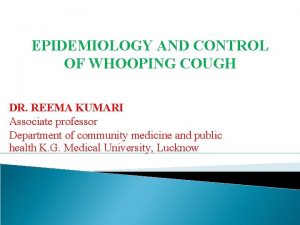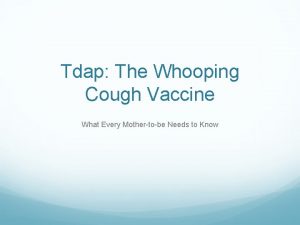PERTUSSIS WHOOPING COUGH What is Pertussis Highly contagious
















- Slides: 16

PERTUSSIS “WHOOPING COUGH”

What is Pertussis? � Highly contagious respiratory disease. � Caused by the bacterium bordetella pertussis. � One positive case in a home = a 90% to 100% chance other susceptible household members will catch it! � Uncontrollable, violent coughing � Deep breathes after coughing “fits” result in a "whooping" sound.

How is it spread? A bacteria releases toxins in the lungs damages the cilia and causes inflammation (swelling). Usually spread by coughing or sneezing Infants typically infected by older siblings, parents or caregivers Many adults think they just have a lingering cough from a “cold”

Symptoms: � Usually develop within 7– 10 days after exposure, � May be as long as 6 weeks!! � Early symptoms can last for 1 to 2 weeks and usually include: �Runny nose �Low-grade fever (generally minimal throughout the course of the disease) �Mild, occasional cough �Apnea — a pause in breathing (in infants) �Most Infectious during this time!! �Antibiotics may shorten the time of infectivity.

Progressive Symptoms Paroxysms (fits) of many, rapid coughs followed by a high-pitched "whoop" Vomiting (throwing up) Exhaustion (very tired) after coughing fits

Testing And Treatment Nasopharyngeal Swab: Small swab placed in nose

FACTS: � Known as the “ 100 Day Cough” � Serious illness in children � AND adults May be life threatening in infants � Worldwide: 30 -50 Million cases of Pertussis and about 300, 000 deaths annually � More than half of infants less than 1 year of age are hospitalized. � Vaccination: �Prevents the spread �Lessens the severity �Childhood vaccine wanes over time, after 5 -10 years.

Infants < 1 year � 57% must be hospitalized � 1 in 4 (23%) get pneumonia (lung infection) � 1 or 2 in 100 (1. 6%) will have convulsions (violent, uncontrolled shaking) � Two thirds (67%) will have apnea (slowed or stopped breathing) � 1 in 300 (0. 4%) will have encephalopathy (disease of the brain) � 1 or 2 in 100 (1. 6%) WILL DIE



2012 Pertussis Outbreak Locations � Washington State – Current Epidemic �Approximately 2, 900 cases this year �Typically less than 2 oo/yr � North Carolina December to June - 179 cases, in 23 counties � Alamance County - 122 cases alone! � 126 cases reported statewide in 2011. �

The Sound of Pertussis Infant with Pertussis:

Prevention � VACCINATION with Tdap!! �Two or more weeks before coming into close contact with an infant �Families with and caregivers of new infants. �Keep infants and high risk individuals away from those who are infected.

Who Should Get Vaccinated? ? � Any child 7– 10 who did not complete the childhood DTa. P vaccination series � Anyone 11 and older who has not yet received a Tdap booster � Adults should get a Tdap vaccine instead of the regular tetanus booster � Women who are pregnant (3 rd Trimester) or may become pregnant

Childhood Vaccination Schedule � DTa. P series is recommended for children: � 2 months � 4 months � 6 months � 15 -18 months � 4 -6 years of age � Tdap booster should be given to children by 11 years of age

Thank You! Tammra L Morrison, RN Communicable Disease/Preparedness Coordinator Wilson County Health Department 252 -237 -3141
 An acute highly contagious viral disease
An acute highly contagious viral disease Is the x axis the independent variable
Is the x axis the independent variable Submedical term
Submedical term Becoming a contagious christian video study download
Becoming a contagious christian video study download Animism vs animatism
Animism vs animatism Contagious diffusion
Contagious diffusion Define stimulus diffusion
Define stimulus diffusion Contagious diffusion
Contagious diffusion Geography diffusion
Geography diffusion Is protracted bacterial bronchitis contagious
Is protracted bacterial bronchitis contagious How to test for meningitis
How to test for meningitis Attitudes are contagious make yours worth catching
Attitudes are contagious make yours worth catching Example of contagious diffusion
Example of contagious diffusion Virus that causes croup
Virus that causes croup Difusi cascade
Difusi cascade Is pfapa contagious
Is pfapa contagious Relocation diffusion vs expansion diffusion
Relocation diffusion vs expansion diffusion
